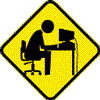In the instruction matter that comes with PC equipment, I often see the instruction to connect the power plug directly.to the wall outlet; do not use an intermdiary power strip, lightning protector, or extention cord.
I am curious. Just what technical problem are the manufacturers trying to avoid ?
Thanks. ...batpark


















 Sign In
Sign In Create Account
Create Account

